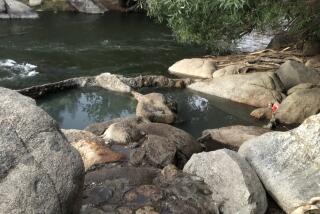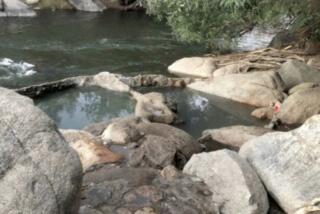17 Dives by Scientists at Crater Lake Fail to Discover Hot Springs on Floor
- Share via
CRATER LAKE, Ore. — Scientists didn’t find the hot springs they were seeking on the floor of Crater Lake, but a park official said the 17 dives in a one-man submergible this month yielded valuable scientific information.
Oregon State University oceanographer Jack Dymond made the final dive in the Deep Rover on Tuesday, said Peter Thompson, chief ranger at Crater Lake National Park.
The dives began Aug. 5 in the second year of a three-year study, funded by the National Park Service, of the possible effect on the lake of hot springs, or hydrothermal vents, that may be the remnants of volcanic activity.
The work is part of a larger 10-year study launched when the 1,932-foot-deep lake, the nation’s deepest, began to lose some of its famous clarity.
The scientists said earlier this month that nothing they have found so far could settle the question of whether proposed drilling for hydrothermal energy more than seven miles away would affect the lake.
Although navigational difficulties precluded a precise search of the area where the hydrothermal activity was suspected, Thompson said a variety of hydrothermal information was gathered.
In addition, he said, “A great deal of biological and geological information is going to be derived from the samples taken.”
Algae samples were taken as deep as 800 or 900 feet, he said, including some with forms of life never described before. In addition, a fish was sighted at 743 feet.
More to Read
Sign up for Essential California
The most important California stories and recommendations in your inbox every morning.
You may occasionally receive promotional content from the Los Angeles Times.













